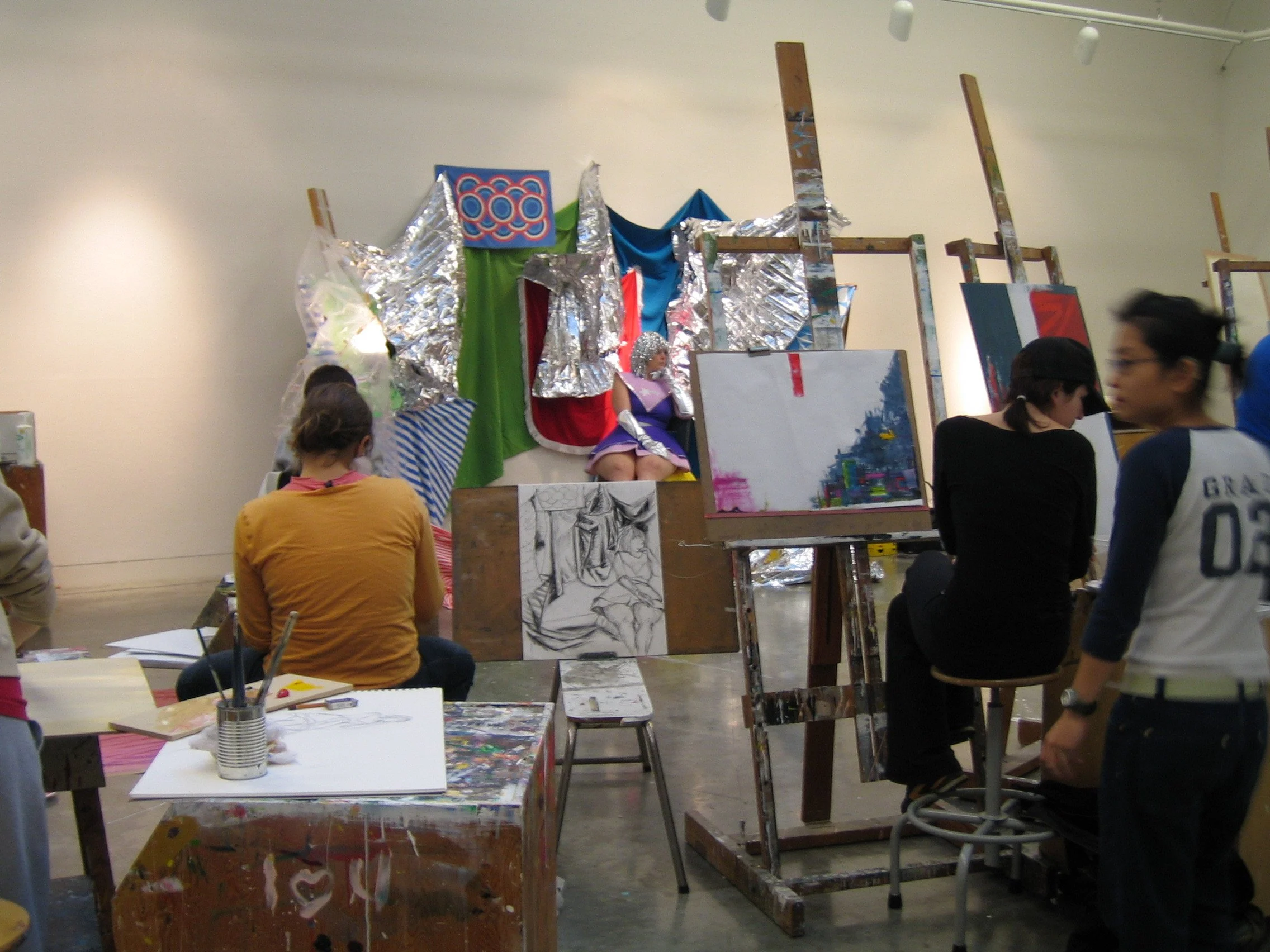Teaching painting requires a good balance of ideas about technique, form, context and concept. Also, one wants to help the student find their personal vision, and an indescribable “it” factor. I am going to share some class projects here over the next few weeks. If you teach, or, if you like to explore painting on your own, maybe some of the ideas will be useful. These projects are from some years ago (I retired from teaching in 2017.)
Finding “the zone” in which to fully engage in the studio requires courage. This “space mission” exercise is a metaphor for getting there. The painter has many struggles. The journey is never done.
Call this one a PAINT-IN, and invite all the painting students. This is more like a happening than a class. Make fun posters for your art building. I’ve recreated a playlist from a CD I made at the time. You can find it on Spotify as a public play list called “music for painting in outerspace.” It includes Sun Ra, Deee-Lite, Alice Coltrane, David Bowie and various movie sound tracks. The music you would choose is important in setting up a mood for fun and perserverance. I also served green tea.
To begin, set up a large still-life/stage set. I had collected colourful used sheets and blankets from thrift stores which I used for a lot of still-life setups for my intro classes. I also used emergency blankets and was lucky enough to find a model who already had a space suit and silver wig. Thrift store alien or spaceship commander costumes would do and a willing figure model.
Students can set up their stuff around it. Sharing the experience is a big part of the fun. This class was 3 hours long.
Students will try to listen to their own music but explain that you are all on the ride together.
Just allow it to happen. A big painting improvisation.
I would usually precede a class project with a lecture and slide presentation but for this one I just let everyone loose to share the experience.
Posted on August 8, 2022.
Photos: November 3, 2005, University of Victoria.

